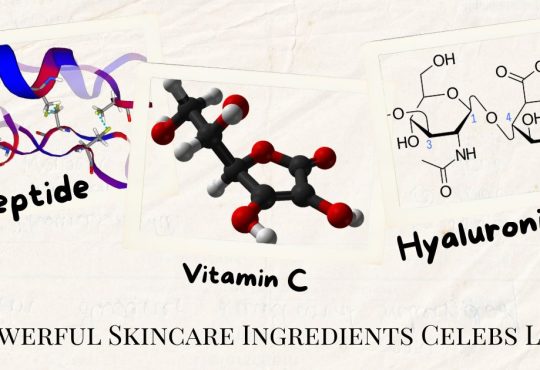
Sunscreen is essential for many, regardless of gender or age, especially during hot weather, as it blocks the sun’s direct heat. It protects from possible harm and complications caused by overexposure to the sun for the overall well-being of every individual. This article will explore SPF intricacies and the 15 top products with our ideal sunscreen tips in 2024.
Ideal Sunscreen Tips: Decipher the Top 15 Epic Products!
Understanding the Composition of Sunscreen: Unveiling the Intricacies
- Regulatory Insights: In the intricate world of skincare, sunscreen is a pivotal player regulated as a drug by the esteemed U.S. Food and Drug Administration (FDA). Within the regulatory framework outlined in the OTC Sunscreen Monograph, various ingredients are harnessed to fortify these formulations, ensuring they effectively counteract the harmful effects of ultraviolet (UV) radiation. Delving deeper, these formulations target radiation from 290 to 400 nanometers, encompassing the critical UVB and UVA wavelengths.
- The Versatility of Broad-Spectrum Protection: A hallmark of top-tier sunscreens is their ability to provide comprehensive protection against the dual onslaught of UVA and UVB radiation. This formidable defense is achieved by incorporating active ingredients, which exhibit a multifaceted approach. These actives, whether chemical, mineral, or a harmonious fusion of both, serve as the vanguard against the ravaging effects of solar radiation; within chemical sunscreen actives, stalwarts such as avobenzone, homosalate, octisalate, and octocrylene reign supreme. Conversely, mineral sunscreen formulations boast the esteemed presence of titanium dioxide and zinc oxide, stalwart defenders revered for their efficacy in shielding the skin from the sun’s wrath.
- Embracing the Complex Tapestry of Formulation: Beyond the limelight of active sunscreen agents lies a meticulously curated symphony of supplementary ingredients, each playing a distinct role in enhancing sunscreen formulations’ efficacy and sensory experience. These formulations house a rich tapestry of constituents akin to their non-sunscreen counterparts, from aqueous bases to lipid-rich emollients. Emulsifiers orchestrate the harmonious blend of disparate elements, while thickeners bestow viscosity and stability upon these aqueous marvels. pH adjusters maintain the delicate equilibrium of these formulations, ensuring optimal compatibility with the skin’s natural pH. Preservatives, the unsung skincare heroes, safeguard against microbial contamination, preserving the integrity of these formulations for prolonged shelf life.
- Nurturing the Sensorial Experience: Elevating the sensory journey, sunscreen formulations may harbor an assortment of embellishments to tantalize the senses and pamper the skin. In its myriad olfactory symphonies, Fragrance imbues these formulations with indulgence, transforming each application into a sensory delight. Film formers, deployed with precision, confer water resistance, fortifying these formulations against the onslaught of aquatic endeavors. Moisturizers, infused with humectants and emollients, wrap the skin in a veil of hydration, ensuring suppleness and comfort throughout the day. Meanwhile, antioxidants and anti-aging compounds, the unsung skincare heroes, confer additional protective benefits, shielding the skin from environmental aggressors and preserving its youthful radiance for years.
Embrace the intricate dance of science and artistry woven into each sunscreen formulation, celebrating its multifaceted role in safeguarding and nurturing the skin’s vitality in the face of the sun’s relentless onslaught.
Decoding SPF: Understanding its Significance
- Wnek explains that unveiling the Acronym SPF, or sun protection factor, is a crucial metric in evaluating the efficacy of sunscreen formulations. It delineates the ratio between the amount of solar energy, specifically UV radiation, required to induce sunburn on skin treated with sunscreen versus that on untreated skin.
- Dispelling Misconceptions: Contrary to popular belief, the SPF value does not denote the duration one can prolong between sunscreen applications. Instead, it signifies the sunscreen’s protection against UV-induced skin damage. It’s essential to consult the drug facts label accompanying each sunscreen to ascertain the recommended frequency of reapplication.
- Navigating Application Guidelines: While a higher SPF may confer enhanced protection against UV radiation, it does not grant immunity from the necessity of regular reapplication. Regardless of the SPF level, adherence to the stipulated reapplication guidelines outlined on the product label remains paramount to ensure continual protection against sunburn and related skin damage.

Several Critical Factors:
When selecting the ideal sunscreen, several critical factors come into play to ensure you get the best skin protection. Let’s explore these vital considerations in more detail:
Broad-spectrum protection
It’s essential to shield your skin from UVA and UVB rays, as they can lead to sunburns, premature aging, and even skin cancer. Look for sunscreens labeled as “broad-spectrum,” indicating they offer comprehensive protection against harmful rays. This ensures your skin is safeguarded from various UV wavelengths, minimizing the risk of sun damage and signs of aging like hyperpigmentation and wrinkles.
SPF 30 or higher
Sun Protection Factor (SPF) measures a sunscreen’s ability to protect against UVB rays, the primary cause of sunburn. Dermatologists advise the application of sunscreen with an SPF of 30 or greater for everyday protection. For extended outdoor activities or prolonged sun exposure, opting for a higher SPF, such as 50 or above, provides insurance against sunburn and skin damage. Studies have shown that people often apply less sunscreen than necessary, so choosing a higher SPF level helps compensate for underapplication.
Active Ingredients
Sunscreens come in two main formulations: chemical and mineral. Chemical sunscreens comprise organic compounds that absorb UV radiation, transforming it into heat, subsequently released from the skin. These sunscreens are typically lightweight, easy to apply, and often preferred for activities like swimming due to their water-resistant properties. On the other hand, mineral sunscreens contain minerals such as zinc oxide or titanium dioxide of natural origin, creating a physical barrier on the skin, reflecting and scattering UV rays. While mineral sunscreens may leave a white cast and be slightly more challenging to spread, they offer broad-spectrum protection and are often gentler on sensitive skin.
Formula Type
Think about the sunscreen’s consistency and texture, as well as your skin type and preferences. Lotions and creams are recommended for their hydrating properties and long-lasting protection. They are particularly suitable for dry skin types since they aid in trapping moisture and averting dryness throughout the day. If you possess oily or acne-prone skin, opt for lightweight, non-comedogenic formulas that won’t clog pores or exacerbate breakouts. While sprays offer convenience and easy application, they might necessitate more frequent reapplication and can be less effective in forming a uniform protective barrier on the skin.
Water Resistance
If you anticipate sweating or swimming, choose a water-resistant sunscreen to ensure it stays put and maintains its effectiveness. Water-resistant sunscreens are formulated to withstand exposure to water for a specified amount of time, providing continuous protection even during outdoor activities. However, following the recommended reapplication guidelines is essential, as prolonged water exposure can diminish the sunscreen’s efficacy over time.
Your Skin Type
Tailor your sunscreen choice to your specific skin type and needs. For dry skin, look for sunscreens enriched with moisturizing ingredients like dimethicone, glycerin, and hyaluronic acid to keep your skin hydrated and nourished. Avoid alcohol-based formulas, as they can further dry out the skin. If your skin tends to be oily or prone to acne, opt for oil-free, mattifying sunscreens that control excess oil production and leave a matte finish. Look for ingredients like silica and niacinamide, which help absorb oil and minimize shine without clogging pores or causing breakouts.
Should You Opt for Face-Specific Sunscreen?
-
Unified Protection:
GH Beauty Lab experts assert that sunscreen offers uniform protection against harmful UV rays regardless of intended use. Hence, a single sunscreen product suffices for both facial and body applications.
-
Tailored Formulations:
While body sunscreen may serve its purpose, its texture or composition might not align with facial skincare needs. Individuals with oily, combination, or sensitive skin may find conventional body sunscreens overly greasy or laden with Fragrance, potentially triggering irritation. In such cases, opting for products specially formulated for facial use can be advantageous.
-
Enhanced Compatibility:
Face-specific sunscreens are meticulously crafted to cater to the unique requirements of facial skin. These formulations are designed to be lightweight, non-comedogenic, and free from potentially irritating fragrances. By prioritizing compatibility with facial skin, these items are less inclined to clog pores or cause adverse reactions, ensuring a comfortable and irritation-free experience.
Discovering the Ideal Everyday Sunscreen
A GH Beauty Lab study involving 1,139 adults revealed that while 58% of individuals apply sunscreen daily to their face, merely 15% extend this habit to their face and body. To streamline daily application, prioritize lightweight and fast-absorbing formulations, ensuring they seamlessly integrate into your skincare or makeup routine without causing interference with clothing or cosmetics, as GH Beauty Lab experts recommended.
Opt for Convenience: When selecting an everyday sunscreen, favor lotions or creams over spray variants. They facilitate more straightforward application, especially on smaller areas of exposed skin that necessitate daily coverage. Unlike sprays, which may be more suited for sporadic use or larger body areas, lotions, and creams offer precision and control for facial application.
Tailored to Your Skin: For facial sun protection, search for products designed specifically for your skin type, whether dry, oily, sensitive, acne-prone, or combination. Choosing a sunscreen formulated to address your complexion’s unique needs enhances its efficacy and compatibility, ensuring optimal protection and comfort throughout the day.
Mastering Sunscreen Application: A How-To Guide
- Apply Generously: Ensure comprehensive coverage by spreading sunscreen liberally across all exposed areas at least 30 minutes before heading outdoors. GH Beauty Lab’s former Executive Director, Birnur Aral, PhD, recommends using approximately one ounce (equivalent to two tablespoons or a shot glass-full) for the body and a nickel-size dollop for the face.
- Optimal Technique: For spray sunscreens, begin by evenly spraying the product across the skin surface before gently rubbing it in. To address any missed spots, consider applying a second coat, as suggested by Dr. Wang. For maximum efficacy, it’s advisable to apply sunscreen before dressing to guarantee full coverage.
- Layer for Protection: Sunscreen isn’t foolproof, irrespective of its SPF rating. To mitigate sun damage effectively, complement sunscreen application with additional protective measures. Dermatologists recommend donning sun-protective clothing, wide-brimmed hats, and UV-blocking sunglasses while seeking shade during peak UV exposure hours from 10 a.m. to 4 p.m. Embrace the three “S’s” mantra, as emphasized by Aral: Apply sunscreen, seek shade, and wear sun-protective attire and eyewear to safeguard your skin against harmful UV radiation.
Top Sunscreens for Every Need
Rodan + Fields Essentials Face + Body Sunscreen SPF 50
Best Overall Body Sunscreen
Price: $35 at RodanandFields.com
Hawaiian Tropic Skin Defense Sunscreen Lotion SPF 50
Best Value Body Sunscreen
Price: $14 at Walgreens
Vichy LiftActiv Peptide-C Sunscreen SPF 30
Best Overall Face Sunscreen
Price: $45 at Dermstore
Hawaiian Tropic Sheer Touch Sunscreen Face Serum SPF 30
Best Value Face Sunscreen
Price: $18 at Walgreens
Dr. Jart+ Every Sun Day Mineral Face Sunscreen SPF 50
Best Sunscreen for Oily and Acne-Prone Skin
Price: $40 at Sephora
Neutrogena Best Sunscreen Serum
Best Sunscreen for Everyday Use
Price: $14 at Amazon
Colorescience Total Protection No-Show Mineral Sunscreen SPF 50
Best Mineral Face Sunscreen
Price: $45 at Amazon
Hampton Sun SPF 50 Continuous Mist Sunscreen
Best Spray Sunscreen
Price: $32 at Amazon
Sun Bum Original Sunscreen Spray SPF 50
Best Value Spray Sunscreen
Price: $17 at Amazon
Everyday Humans Oh My Bod! SPF 50 Body Sunscreen Lotion
Best Sunscreen for Sensitive Skin
Price: $16 at Target
Conclusion:
To summarize, when selecting the ideal sunscreen, prioritize broad-spectrum protection, select the suitable SPF level, consider the active ingredients and formulation, choose water-resistant options for outdoor pursuits, and pick a sunscreen that matches your skin type and personal preferences. Considering these factors ensures that the skin provides the optimal protection to stay healthy and radiant in the sun.






